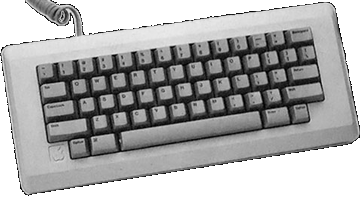Macintosh II

Essentials
Family: Macintosh II
Codename: Little Big Mac, Milwaukee, Ikki, Cabernet, Reno, Becks, Paris, Uzi
Gestalt ID: 6
Minimum OS: System 3.0/Finder 5.1
Maximum OS: 7.5.5
Introduced: March 1987
Terminated: January 1990
Processor
CPU: Motorola MC68020
CPU Speed: 16 MHz
FPU: 68881
Bus Speed: 16 MHz
Register Width: 32-bit
Data Bus Width: 32-bit
Address Bus Width: 32-bit
Level 1 Cache: 256 bytes instruction
ROM: 256 kB
RAM Type: 30 pin SIMM
Minimum RAM Speed: 130 ns
Onboard RAM: 0 MB
RAM slots: 8
Maximum RAM: 20 MB (68 MB via FDHD upgrade kit)
Expansion Slots: 6 NuBus
Video
GPU: various
Storage
Hard Drive: optional 40-80 MB internal
Floppy Drive: 1 or 2 800 kB 3.25" (upgrade to SuperDrive)
Input/Output
ADB: 2
Serial: 2 Mini DIN-8
Audio Out: 8-bit stereo
Speaker: mono
Miscellaneous
Power: 230 Watts
Dimensions: 5.5" H x 18.7" W x 14.4" D
Weight: 24 lbs.
Introduced in March 1987, The Mac II was the ultimate expandable Mac. Based on the new 68020 processor, the Mac II was the first 32-bit Mac (although it was not "32-bit clean). The Mac II included 6 Nubus slots, which allowed for a number of different Apple and Third Part expansion cards. The Mac II was the first Mac with color capabilities--a graphics card could be installed capable of handling up to 16.7 million colors! It originally sold for $3,898 for the basic system, and at $5,498 for 1 MB of RAM, one 800K floppy disk drive and one 40 MB internal SCSI hard disk drive. Thanks to Eric Rasmussen For OS info.
Picture Credits:
Todo Apple Blog
Date: Fri, 06 Nov 1998 23:11:00 -0800
From: Ross D. Chesley
Subject: Mac II
The Macintosh II certainly did have expansion slots, but that was never the reason that anyone I knew wanted it.
When it was released, it was the first Mac that had color. This was its major impact. Up to that point, we were designing with the Mac 128K, 512K, 512Ke, and Mac Plus which all use the 9" monochrome internal display with 512x384 resolution. It was totally cool to have a 640x480 standard resolution and a choice of 256 colors.
The second major fun was installation of multiple monitors. This Mac introduced this unique idea.
The other benefit was that the Mac II was fast--16 MHz CPU, optional math coprocessor, expanded memory capacity (most of us used 5 MB or 8 MB). I also remember that this was the first Macintosh that allowed consumers to open the lid and see inside without voiding the warranty.
Also, this Mac introduced many to dealer installed options including RAM, hard disk upgrades, and third party monitors and video cards.
Date: Sat, 08 Sep 2007 18:56:35 -0700
From: Richard Guay
Subject: A comment about the Macintosh II
Beside the fact that the Macintosh II was much faster than the Plus or SE and had wonderfull color capabilities, it initially shipped with 2 kinds of monitors: a 12" analog b/w (which could display grayscale) and a 13" color that supported all 16 million colors provided by the II's color video card. This last monitor (which internally was a Sony design) was at the time by far the best monitor available in its class and one of the 1st to use the famous Trinitron CRT. It had a beautifull image, bright, crisp, with vivid colors, that made other monitors very pale and dull by comparison. It remained the best for many years and is still very good by today standards. Even later Apple monitors in the 1990's weren't as good as the 13" from 1987.
I remember showing the color capabilities and the wonderfull image quality to some friends that were used to PC-like monitors of the time and they were shocked and amazed by what they saw.
All this, the speed of the II's, the larger screen and the beautifull colors displayed on the Apple 13" color monitor made the Macintosh II a joy to use and contributed to its great success.
